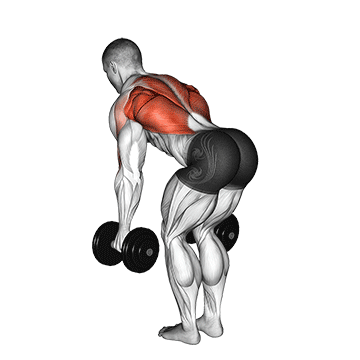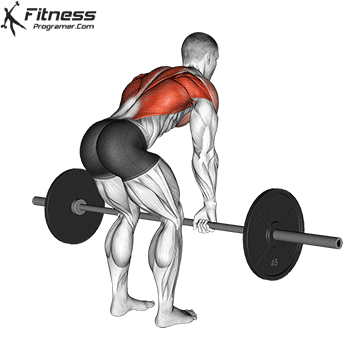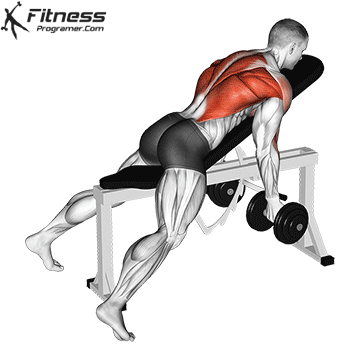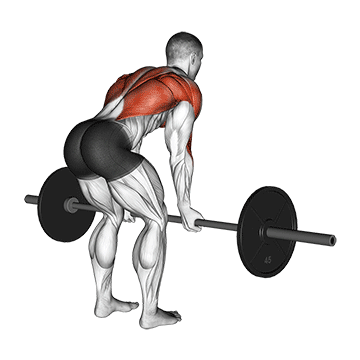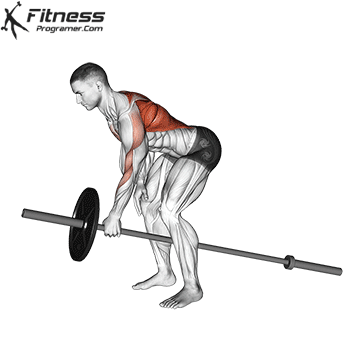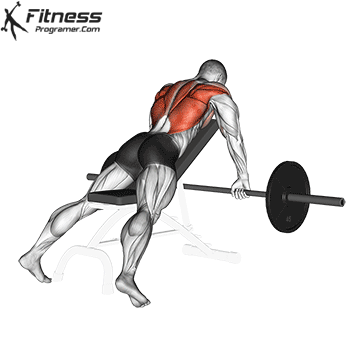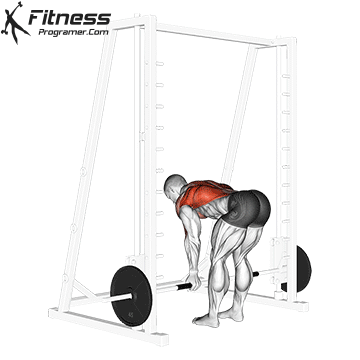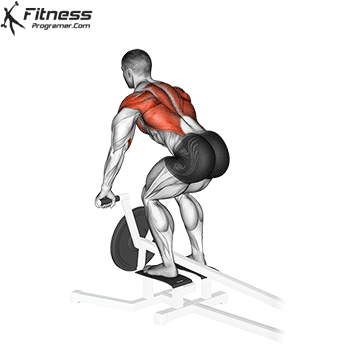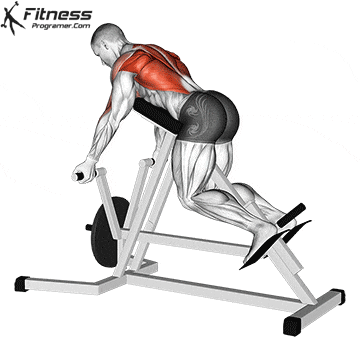Overview
The bent over dumbbell row is a strength-training exercise that primarily targets the latissimus dorsi (lats) while also engaging the rhomboids, trapezius, and biceps. As a compound pulling movement, it develops upper and mid-back strength, improves posture, and enhances pulling power for both athletic and everyday tasks.
How to Perform Bent Over Dumbbell Row
Starting Position: Hold a dumbbell in each hand with palms facing your torso. Stand with feet shoulder-width apart, knees slightly bent.
Hip Hinge: Push your hips back and lean your torso forward to about a 45-degree angle. Keep your back flat and core engaged.
Rowing Movement: Pull the dumbbells toward your ribcage by driving your elbows straight back, keeping them close to your body.
Squeeze and Hold: At the top of the movement, squeeze your shoulder blades together for a brief pause.
Controlled Lowering: Slowly lower the dumbbells back to the starting position, maintaining form and control.
Repeat: Perform 8–12 repetitions per set.
Tips for Proper Form
Keep your back flat and avoid rounding your shoulders.
Engage your core to prevent lower-back strain.
Move the dumbbells in a smooth, controlled manner without jerking.
Lead the pull with your elbows, not your hands.
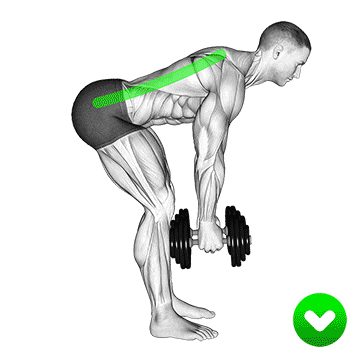
Common Mistakes
Rounding the Back: Places unnecessary stress on the spine and reduces effectiveness.
Using Too Much Weight: Leads to poor form and reliance on momentum rather than muscle engagement.
Flaring Elbows Too Wide: Reduces lat activation and can cause shoulder strain.
Benefits of the Bent Over Dumbbell Row
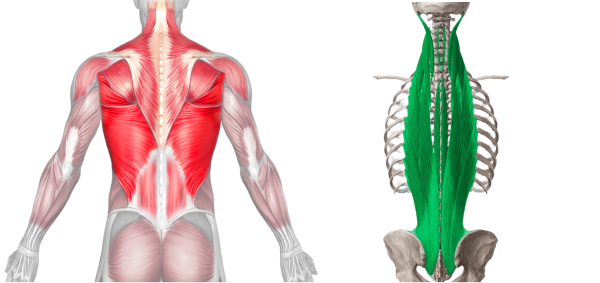
Builds a Strong, Defined Back: Strengthens the lats, traps, and rhomboids, giving the back a wider, more muscular appearance.
Improves Posture: Strengthens postural muscles, helping to counteract the effects of prolonged sitting.
Enhances Pulling Power: Improves performance in sports and lifts that require strong pulling movements.
Engages Core Muscles: Requires stability from the abs and lower back, improving functional core strength.
Versatile and Accessible: Can be performed with minimal equipment, making it suitable for home or gym workouts.
How to Incorporate Into Your Routine
For Beginners: Use light dumbbells for 2–3 sets of 10–12 reps to focus on form.
For Hypertrophy: Perform 3–4 sets of 8–12 reps with moderate-to-heavy weights, focusing on squeezing at the top.
For Strength: Use heavier dumbbells for 4–5 sets of 6–8 reps, resting 2–3 minutes between sets.
For Functional Fitness: Pair with pushing exercises in a push–pull workout split to balance muscle development.
Bent Over Dumbbell Row: Muscles Worked
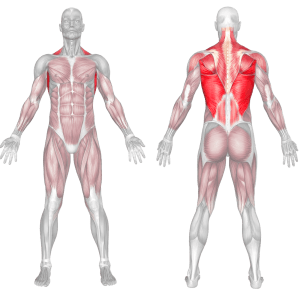
Bent Over Dumbbell Row Variations
These alternatives exercises are all effective ways to stimulate and work similar muscle groups that the Bent Over Dumbbell Row would hit. Try adding these variations of the Bent Over Dumbbell Row into your training to keep workout fun and varied.
Frequently Asked Questions (FAQs)
Is the bent over dumbbell row safe for beginners?
Yes, if performed with proper form and light weights to start.
Can I do this exercise with one dumbbell?
Yes, the single-arm dumbbell row is a great variation for isolating each side.
How often should I include it in my workouts?
1–2 times per week is sufficient for most training programs.
Should I bend over at 45 or 90 degrees?
Around 45 degrees is most common, but a deeper bend can increase lat engagement.
Is it better than the barbell row?
Both are effective, but dumbbells allow a greater range of motion and can be easier on the wrists and shoulders.

